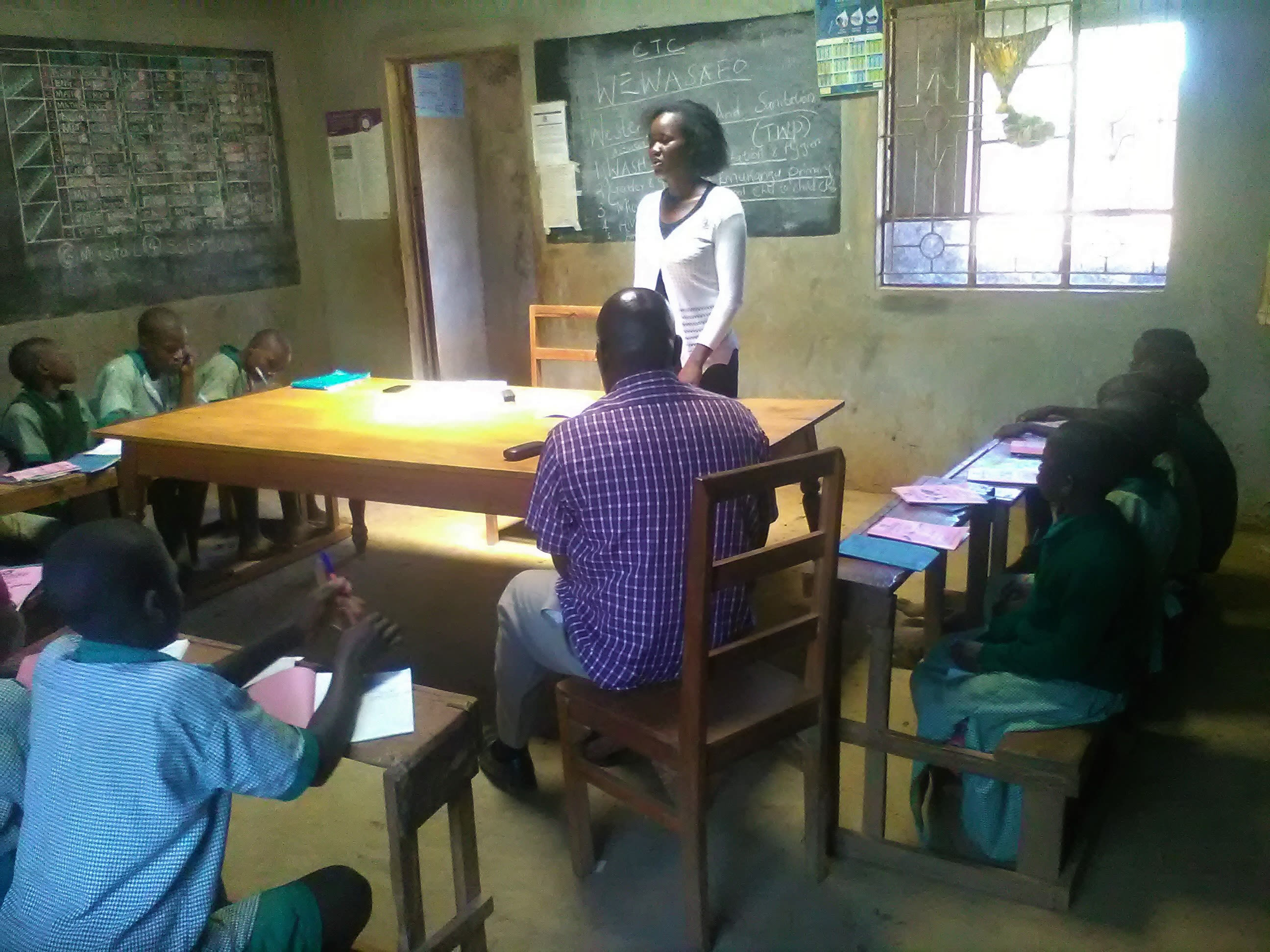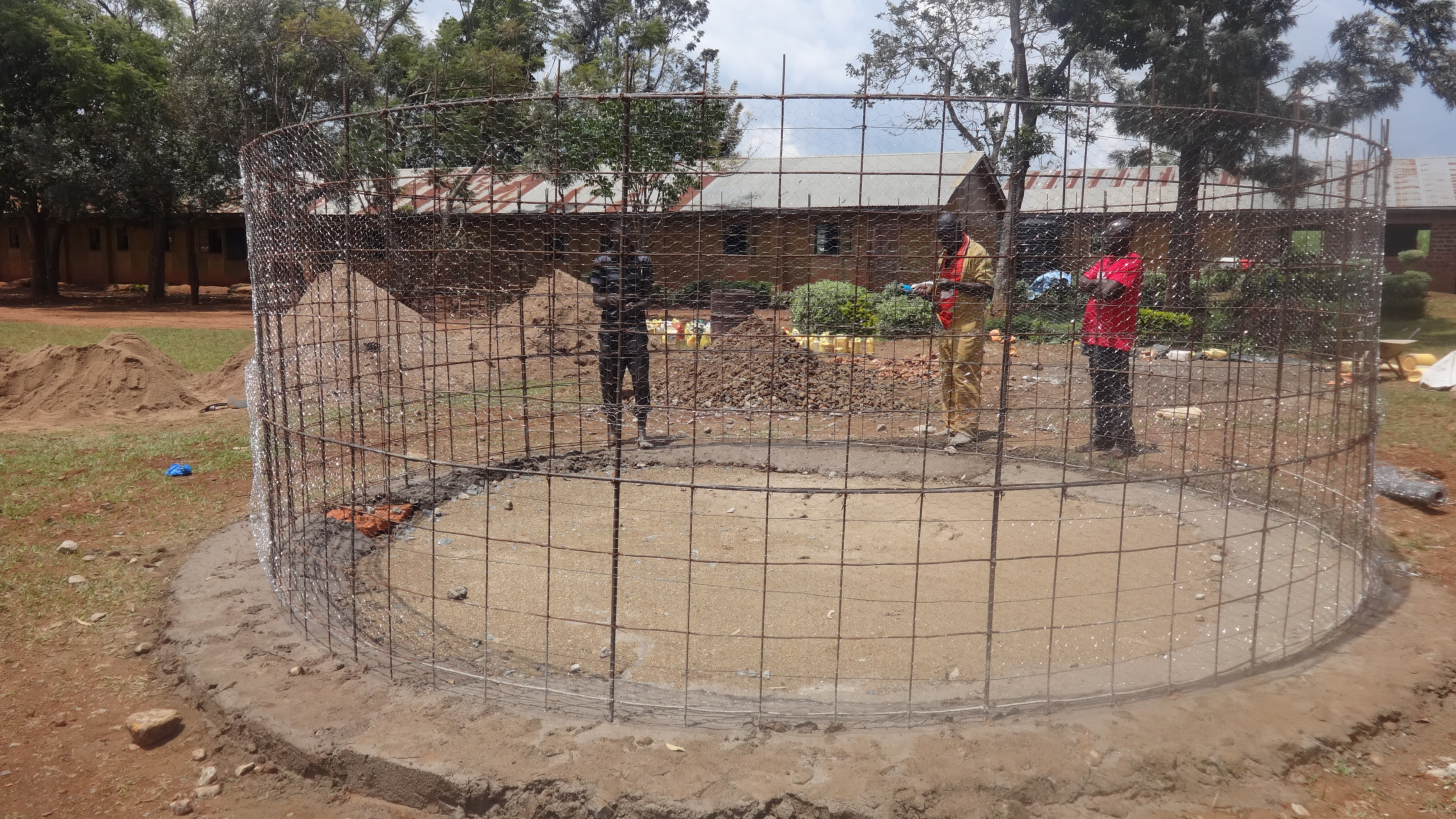This project is a part of our shared program with Western Water And Sanitation Forum (WEWASAFO). Our team is pleased to directly share the below report (edited for clarity, as needed).
Welcome to the School
Emukangu Primary School was established in 2000 as a community school. One year after the school was established, the government took over because the student population was growing so quickly.
It started with a student population of 30, but now has 567. There is also an adjacent early education section that is sponsored by the Anglican Church of Kenya, Diocese of Maseno South. The early education section of the school has a total of 74 students. Emukangu Primary School employs a total of 21 teachers and five support staff. (Editor's Note: While this many people may have access on any given day, realistically a single water source can only support a population of 350-500 people. This community would be a good candidate for a second project in the future so adequate water is available. To learn more, click here.)
The school’s motto is "hard work pays." On a normal day, the pupils report to school at 7am. They carry out routine cleaning of the compound, like sweeping and cleaning latrines. The next activity is morning assembly at 7:30am. At the assembly, students are led in Christian studies and prayer. Classes start at 8am and go until 12:30pm when students return home for lunch with their families. Afternoon classes begin at 1:45pm and end at 3:30pm, and then there's game time. After game time, the pupils congregate for evening assembly. The day ends at 4:30pm when the pupils are dismissed and return home.
Water Situation
The school has a 6,000-liter plastic container that can catch water during the rainy season. However, that isn't nearly enough for the drinking, cooking, and cleaning that needs to happen on a daily basis.
The pupils are required to carry water from their respective homes using plastic jerrycans. Once this is used up, the students are sent out to fetch water from a spring located about half a kilometer from the school, and activity that interferes with their regular class time.
Because water is coming from different sources, there is no way to guarantee it is safe for consumption. Once the water is delivered back to school, it is either dumped in 100-liter buckets in the kitchen for cooking or kept in the same containers.
After drinking this water there are complaints from students about stomachaches and diarrhea, which are both symptoms of typhoid.
Sanitation Situation
Emukangu Primary School has a total of 14 VIP latrines out of which two are for teachers and visitors and the other 12 for students. Out of the 12 for students, four are for boys and eight are for girls. The early education section shares these same latrines. The latrines are not enough compared to the student population (640 pupils, 21 teachers and five workers) and has resulted in students wasting a lot of time lining up during break. And due to the shortage of water, a good number of latrines are never cleaned and thus cannot be used. A good number of latrine doors are missing, too. The school has a urinal area but students are vulnerable to infections as they use both the latrines and urinals without shoes.
The school has one hand-washing station in the form of a plastic bucket and just meant to be poured over hands.
Headteacher Cecilia Anangwe said, "it is high time the school got the toilets and water tank, or else the school be closed down by the Department of Public Health! The Water Project through WEWASAFO has just come in at the very right time and this is indeed God sent!"
Plans: Hygiene and Sanitation Training and Hand-Washing Stations
Training will be held for two days. The facilitator will use PHAST (participatory hygiene and sanitation transformation), ABCD (asset-based community development), CTC (child to child), lectures, group discussions, and handouts to teach health topics and ways to promote good practices within the school. The CTC method will prepare students to lead other students into healthy habits, as well as kickstart a CTC club for the school. This CTC club will oversee the new facilities, such as hand-washing stations, and make sure they are kept clean and in working condition. The two hand-washing stations will be delivered to the school, and the club will fill them with water on a daily basis and make sure there is always a cleaning agent such as soap or ash.
Plans: VIP Latrines
Two triple-door latrines will be constructed with local materials that the school will help gather. Three doors will serve the girls while the other three serve the boys. And with a new source of water on school grounds, students and staff should have enough to keep these new latrines clean.
Plans: Rainwater Catchment Tank
A 50,000-liter rainwater catchment tank will help alleviate the water crisis at this school. The school will also help gather the needed materials such as sand, rocks, and water from the spring for mixing cement (students have already started helping). Once finished, this tank can begin catching rainfall that will be used by the school’s students and staff. Students will no longer have to leave their school in search of water.
We and the school strongly believe that with this assistance, standards will significantly improve. These higher standards will translate to better academic performance!

 Rainwater Catchment
Rainwater Catchment
 Rehabilitation Project
Rehabilitation Project

































